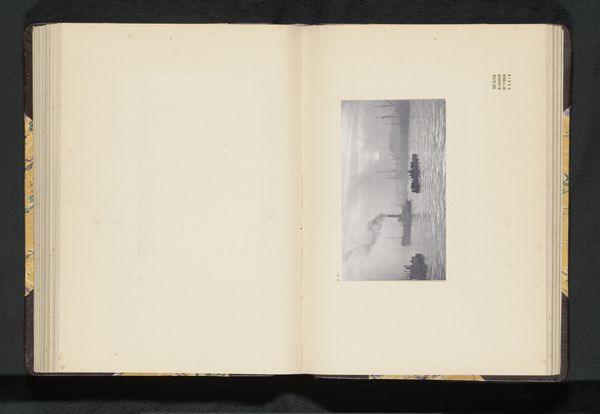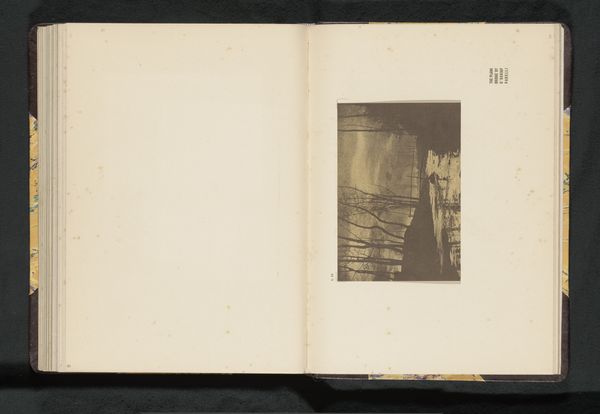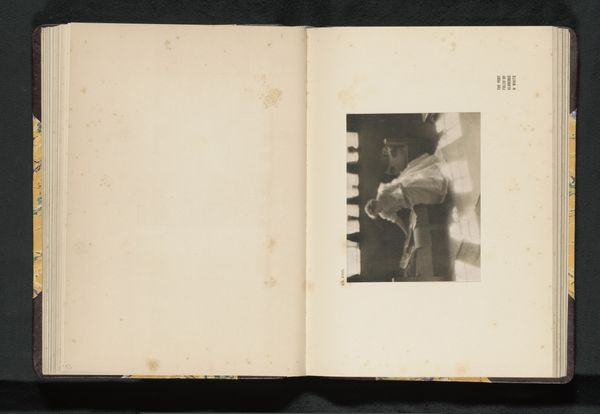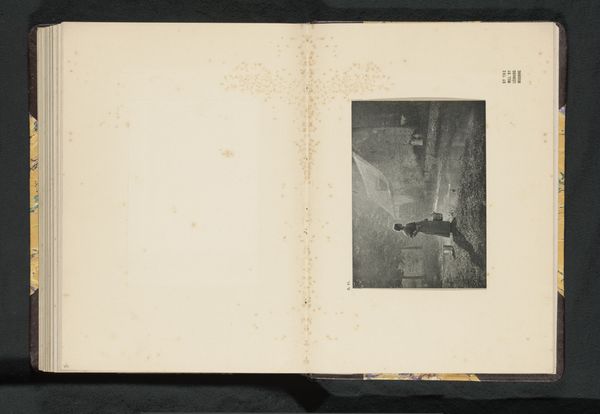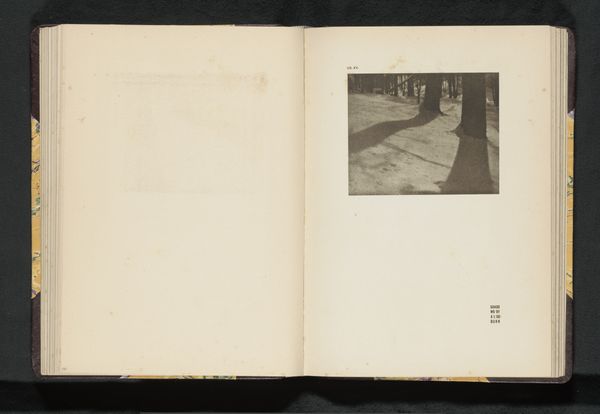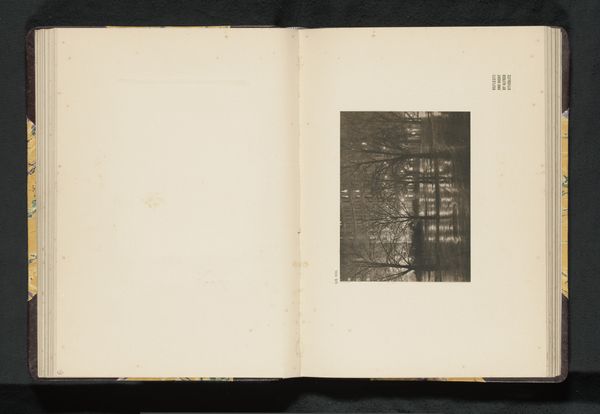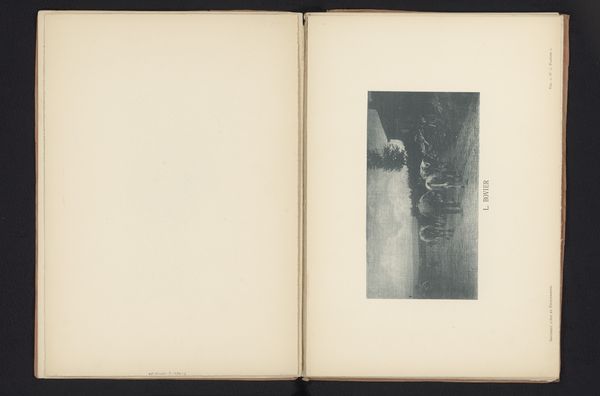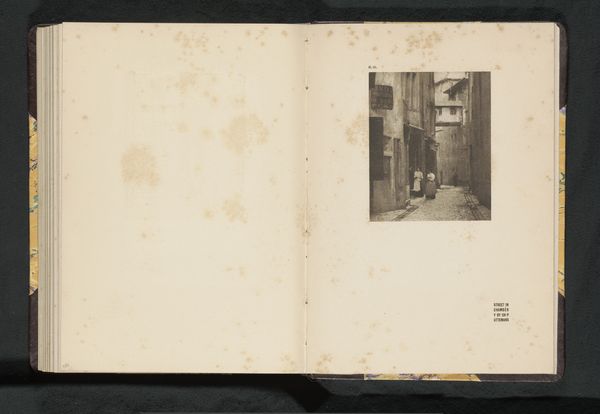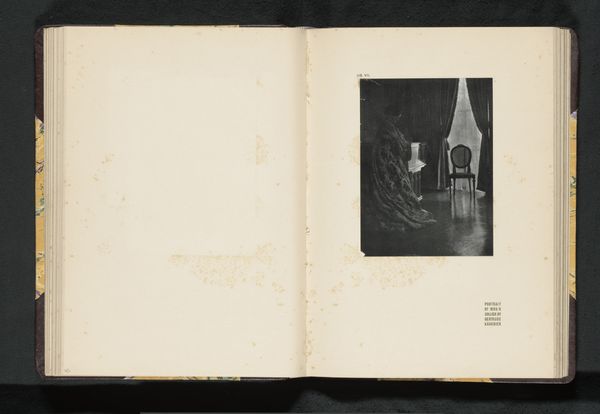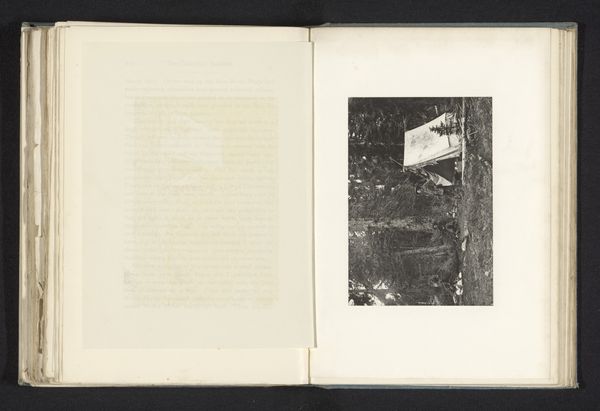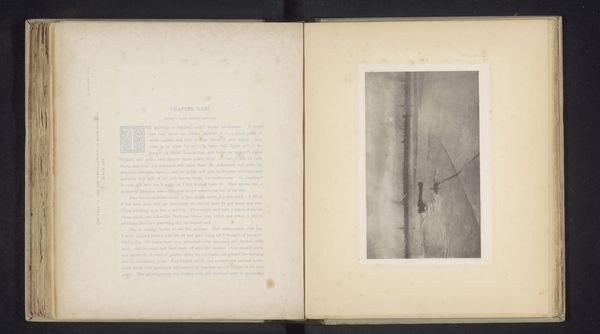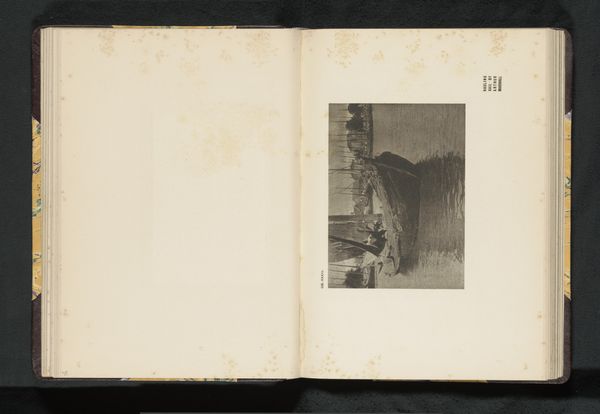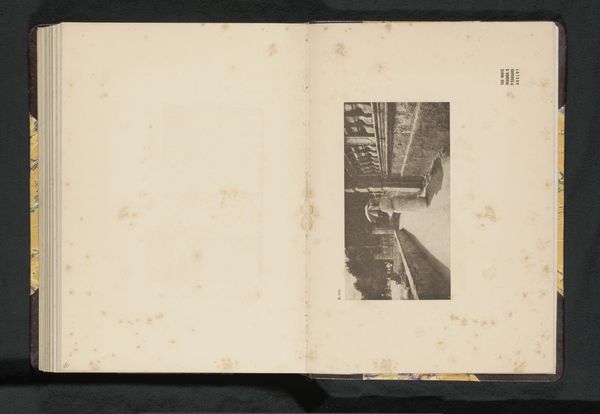
#
aged paper
#
homemade paper
#
paper non-digital material
#
paperlike
#
sketch book
#
paper texture
#
personal sketchbook
#
mountain
#
folded paper
#
paper medium
#
historical font
Dimensions: height 100 mm, width 145 mm
Copyright: Rijks Museum: Open Domain
Curator: Here we have a page from Felix Muhr’s sketchbook, titled “Gezicht op een kerk in de bergen bij maanlicht,” created before 1905. The monochromatic print is affixed to a heavily aged paper. What's your initial take? Editor: It's somber. The sharp, dark verticality of the mountain landscape and the towering church seem almost oppressive, as if weighed down by history and perhaps something more... sinister. Curator: Indeed. The composition is quite striking. Note how the stark vertical lines of the church spire and the mountain ravine dominate the visual space, leading the eye upward. The limited tonal range enhances this feeling of austerity. We must remember that formal qualities speak directly to cultural moods. Editor: Yet austerity itself carries so many historical and political echoes. One wonders: What was the church’s role within that mountainous community? Did it provide refuge or enforce power structures? Considering the era in which Muhr was active, thinking about the social position of religion in the Austrian empire seems vital. Curator: Undeniably. The relationship between power and representation is central to understanding art's impact. Still, the intrinsic qualities cannot be dismissed. The limited use of detail directs our interpretation to focus on line and structure above representational clarity. The paper itself—notice its rough, aged quality—becomes part of the artwork. Editor: I find the paper speaks loudly! It emphasizes the human hand, the act of documentation within specific social conditions. And, thinking more on that landscape, what communities lived within the shadow of that mountain? It's an imposing image that prompts one to consider humanity’s small place in a large world… perhaps even a history of disenfranchisement? Curator: I appreciate the insights this engenders for thinking about these forms and materials. Editor: As I consider how little representation marginalized groups had at this time. Perhaps that accounts for some of the somber feel.
Comments
No comments
Be the first to comment and join the conversation on the ultimate creative platform.
